Yellowstone – September 17 – Oct 1, 2017
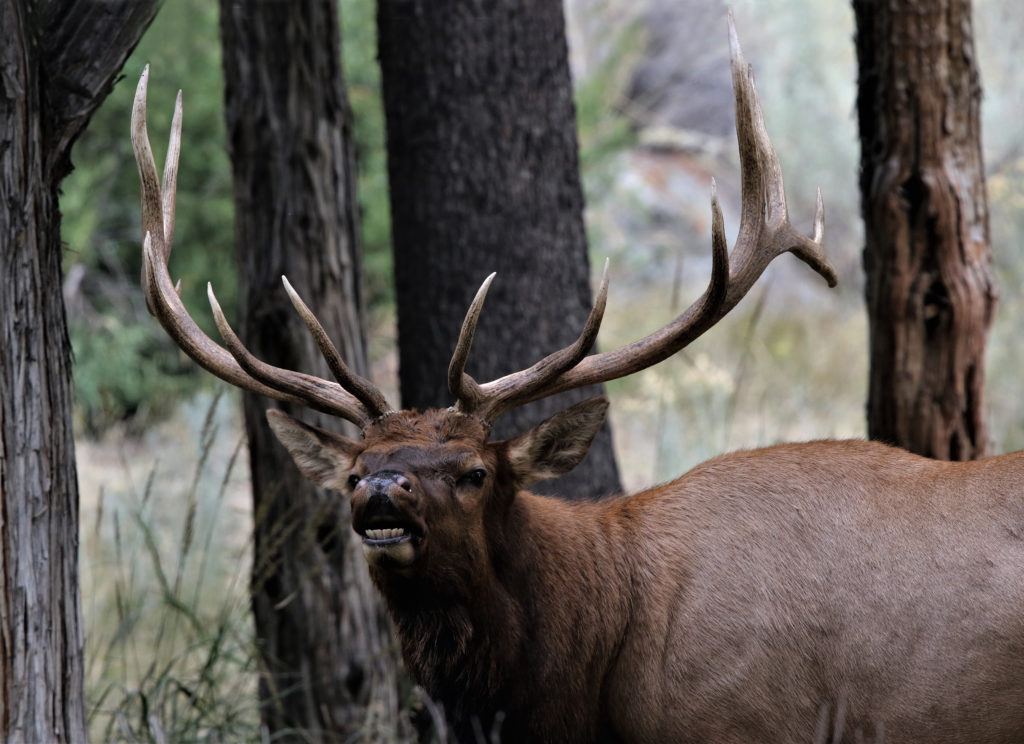
We arrived in Yellowstone National Park on a Sunday evening, September 17th, expecting low tourist attendance, a high percentage of bull elk in the rut and bears in their pre-hibernation feeds. The shock was finding bumper to bumper vehicle traffic moving at rates of speed that made pulling over to spot wildlife subjects impossible. We had not been to the park since 2004. At that time, wildlife photographers were free to scope out opportunities for their shoots without major interference by others. Now, it is impossible, as the park is over-crowded late into the autumn and early in the spring. Between baby-boomers filling campgrounds to capacity in winter-worthy rv/campers and many busloads of Chinese tourists as guests from surrounding towns, it is not possible to become isolated as photographers along the roads of Yellowstone any longer. UPDATE 03/17/2021: REGARDING LARGE NUMBERS OF CHINESE TOURISTS, THESE ARE GUESTS IN OUR COUNTRY AND SHOULD BE TREATED WITH THE SAME RESPECT AS ANY FOREIGN GUESTS. ADDITIONALLY, WE DENOUNCE COWARDLY, IGNORANT WHITE SUPREMACY ABUSE OF AMERICANS OF ASIAN DECENT, OR ANY OTHER-THAN-WHITE AMERICANS. WE ENCOURAGE THE SILENT OBSERVERS OF ABUSE TO DOCUMENT AND REPORT WITNESSED ATROCITIES. THAT’S WHAT REAL PATRIOTS WHO LOVE DEMOCRACY MUST DO.
A wildlife photographer is a magnet for tourists. Pointing a lens at a creature draws dozens of curious onlookers to your elbow asking questions, demanding to know what you are seeing, making it nearly impossible to move and oftentimes, scaring away the photo subject. At times, we felt utter frustration, even anger, for the loss of wonderful photo opportunities. 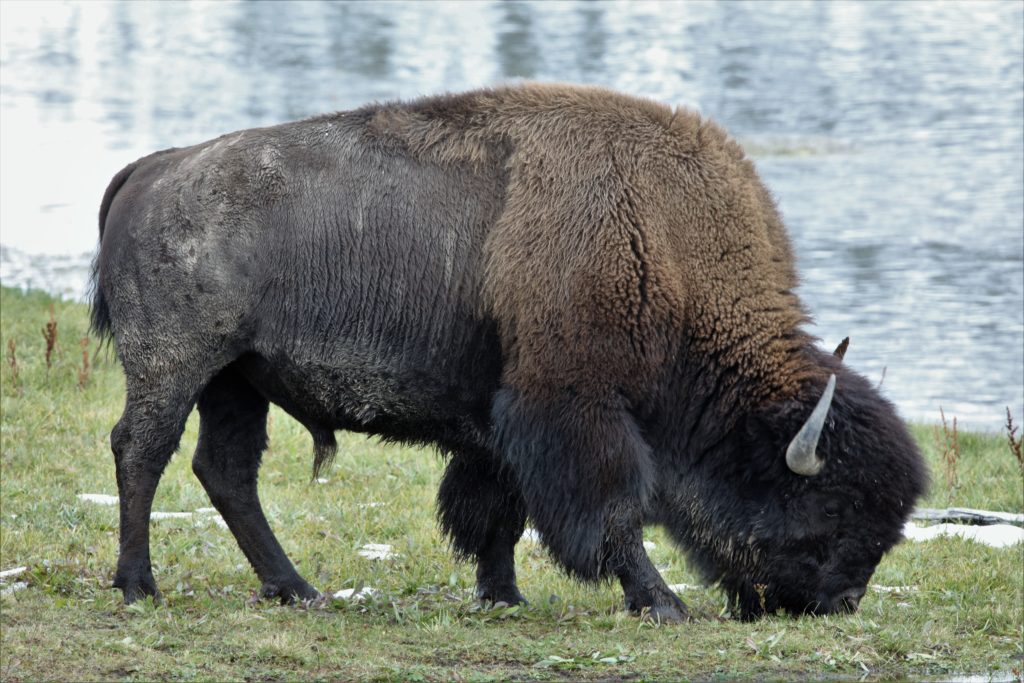
We became determined to make the most of our situation to do wildlife photography. You could photograph bison all day long anywhere in the park. Bison bulls are dangerous when isolated, but herds stream across rivers and roads in good numbers offering anyone opportunities to photograph them.
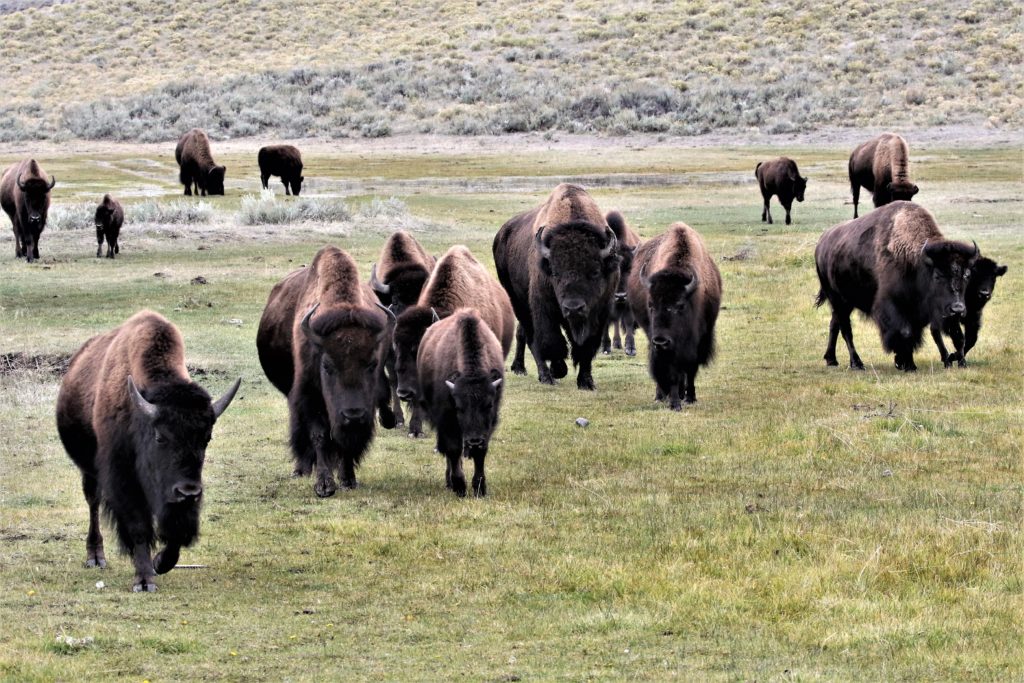
The pronghorns are tolerant of people, if you are careful not to crowd them. 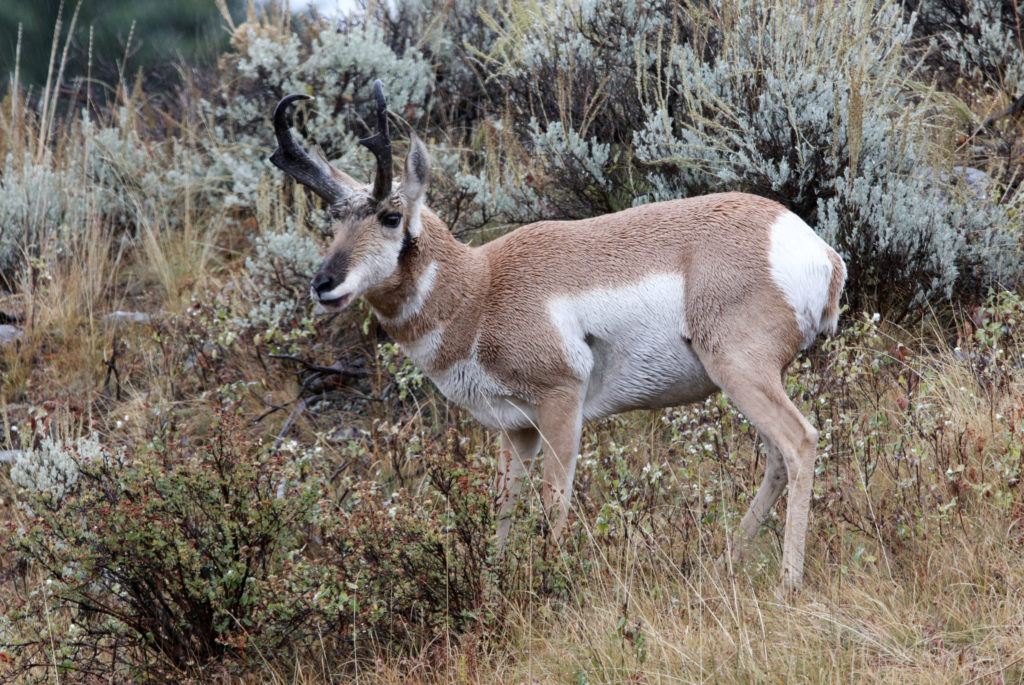
Elk in the rut are predictable to locate. Some are born and raised near human communities, making them photograph-able but also especially dangerous to approach during the rut. Other elk herds frequent prime grazing in valleys or foothills near routes of travel. With persistence, elk photos are going to happen. 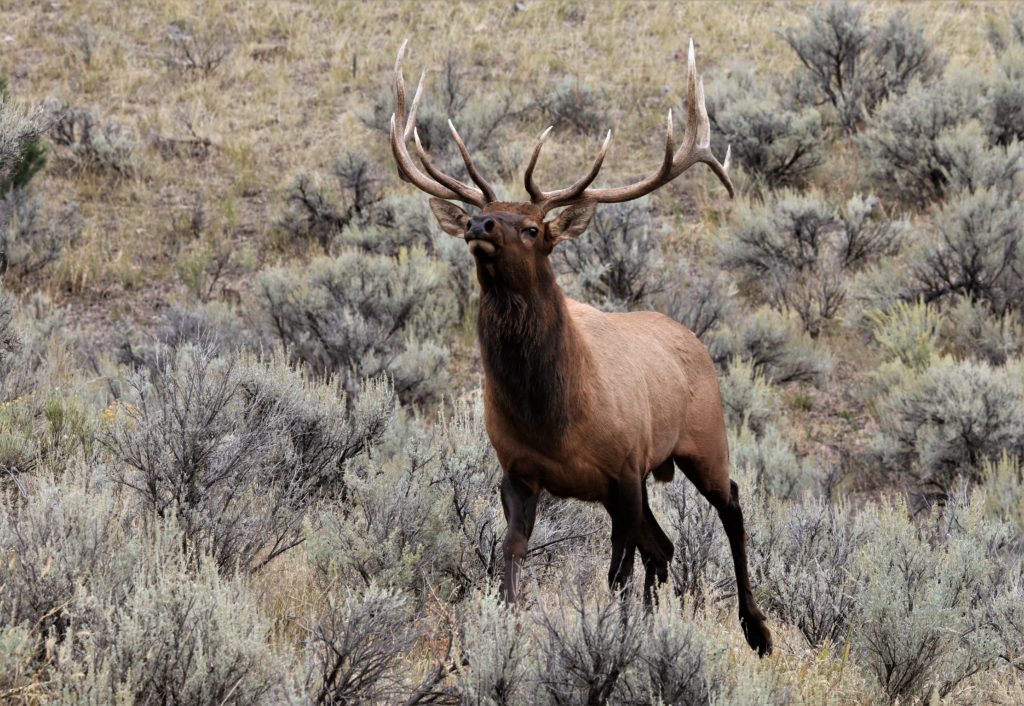
Finding bears to photograph depends on your timing and a little knowledge of their habits. Bears voraciously eat as long as enough food is available to fatten them up for hibernation. During this phase (called hyperphagia) they consume 15,000-20,000 calories per day and need several gallons of liquid to metabolize their food. Berries, nuts, carrion or fresh kills near water are likely places to locate them. Scanning the brush near streams and rivers with berry patches offered the best opportunities. We came upon four sightings of bears that turned into bear jams and made photography very difficult. 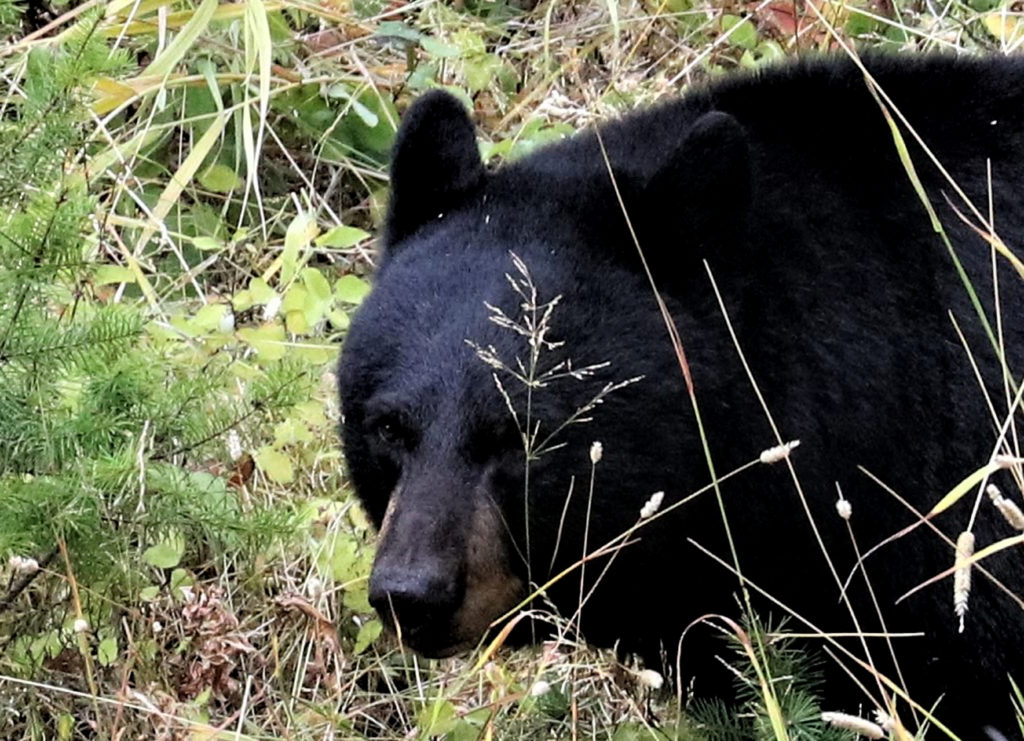
Wolves are not easy to see unless they happen to have made a rare kill near a road. They are very wary of people. Large numbers of tourists dash between high-point observation areas to scan known wolf pack locations with powerful spotting scopes. It seems to please them to spend hours viewing animals that often are more than a mile away – barely being able to determine if a wolf is black or silver. As photographers, we do not consider these sightings as intimate nature experiences worthy of capturing in an image.
Many of the smaller creatures we’d normally photograph in Yellowstone are harder to observe. For one thing, traveling at 20-25 mph is just slow enough to spot smaller subjects, but Yellowstone traffic moves 25-45 mph nowadays. Heavy traffic has apparently pushed many populations further away from the roadways that loop the park. The good news for wildlife is that there are very few roads in Yellowstone, so one assumes many creatures thrive in remote valleys and ridges. Of all the small creatures we sought to photograph, we were most successful at finding the beautiful little cousin to rabbits, the American Pika. Terry’s knowledge of how they create haystacks to store their winter food supplies led us to two denning spots.
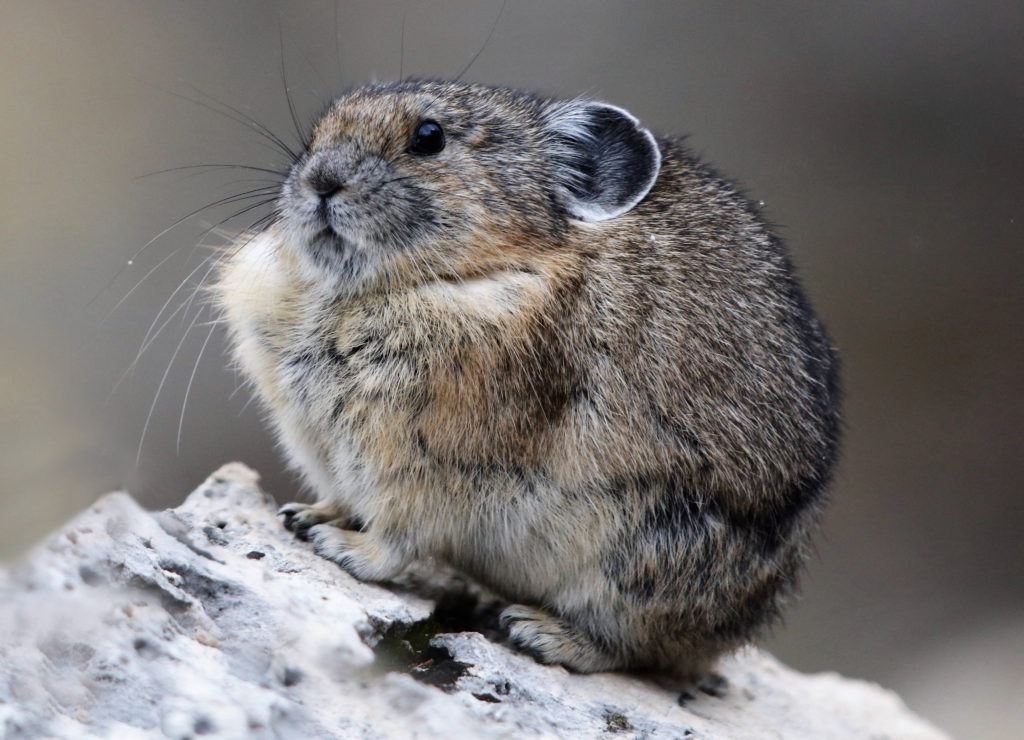
Since wolves were introduced to Yellowstone in the mid-1990’s, they effectively have reduced the coyote population by roughly 50%. Wolves that encounter them will kill them rather than compete with them. The wily Yellowstone coyote has figured out that it is safer to roam nearer to humans, distant from where wolves hang out. We could observe them going about their natural hunting behaviors within range of our telephoto lenses. It is quite the opposite in Grant County, Oregon where coyotes are hunted as vermin. Here, the sight of a slowing vehicle causes a very different response – they will bound away from the roadway as fast as possible.
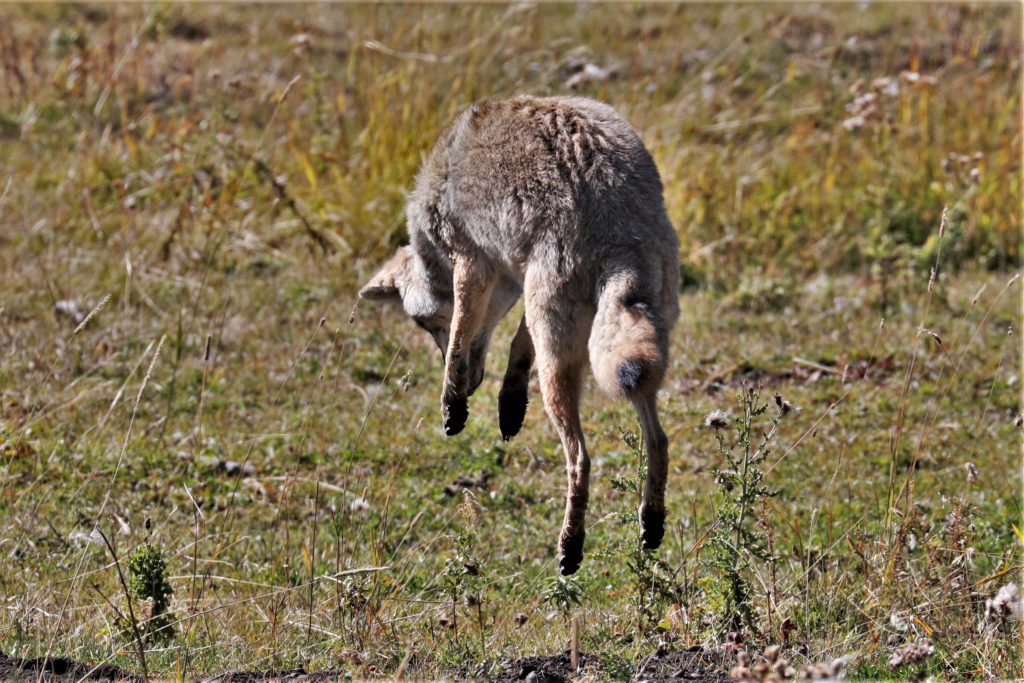
For those who seek beautiful views of some dramatic landscape, Yellowstone will not disappoint them. Artist Point with a view of Lower Falls is breathtaking, as are several waterfalls within the park. Yellowstone Lake is huge with a backdrop of snow-peaked mountains. The scorched countryside from the big fires of 1988 are filling with reproduction forests. The hot springs and geysers add wonder, mystery and a sense of risk about what all lies just below the surface in Yellowstone. We may never return to Yellowstone to do wildlife photography; but still, wildlife does abound there, and we were successful in capturing more images within two weeks than all winter in our home area where creatures are hunted and avoid our approach. To view our slideshow click this link: https://terrysteelenaturephotography.com/yellowstone-national-park-2017/
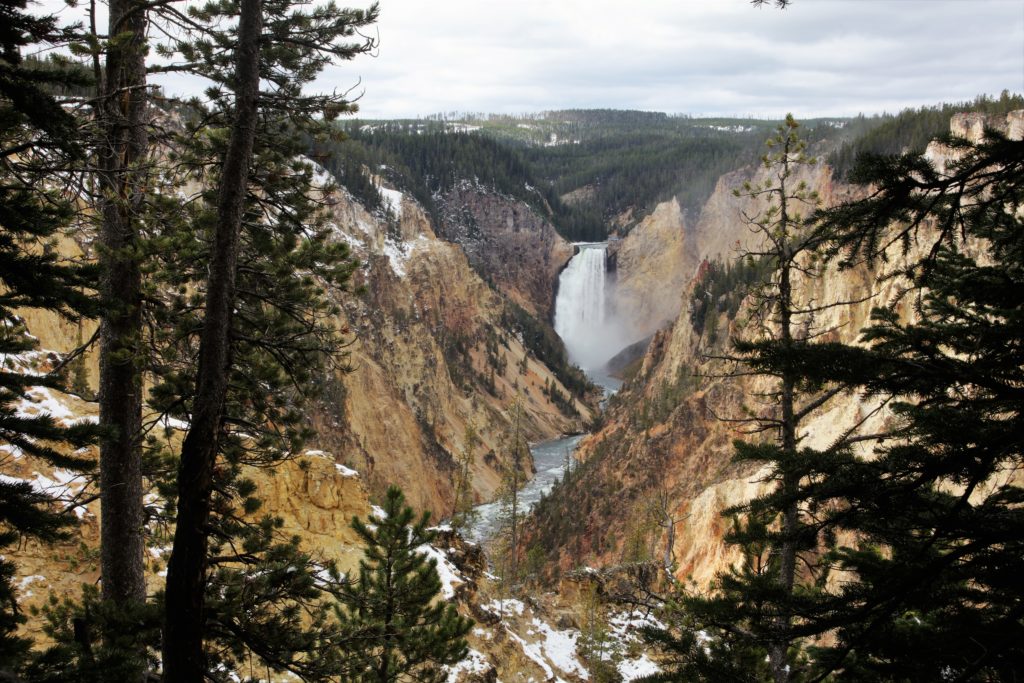
Hello Mark,
Thank you for your kind comments on “Bosque Bob” and other images. Your name is extremely familiar to me, however, I am not a very good name person. I wish I could see your face, I’m sure it would immediately connect with me. Also, do you happen to have a website? I’d like to be able to see your work, too.
At this point in my life I find encouragement from my fellow photographers who give me positive feedback. We once belonged to a website of international photographers, and at times all their comments leaned towards what was wrong with an image instead of what was right with it! It wore me down at times. My wife, Kay, has become very interested in photography and I find myself assisting her more and more, like she spent years doing for me. She’s way better than I was at just a few years into photography. Once more, thank you ever so much. It’s very nice to hear from you.
Terry & Kay
HI Terry,
We met ages ago in Yellowstone. It seems our paths ran across a few times back whenever during photo excursions.
I just ran across your website this evening and am in awe of your photo of a bobcat in a tree at Bosque del Apache NWR, as well as the jackrabbits fighting and several other photos. Nice collection!
Best regards and Happy Holidays!
Mark Miller